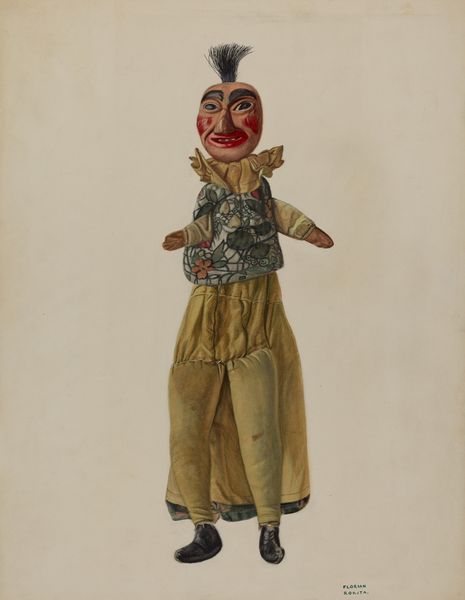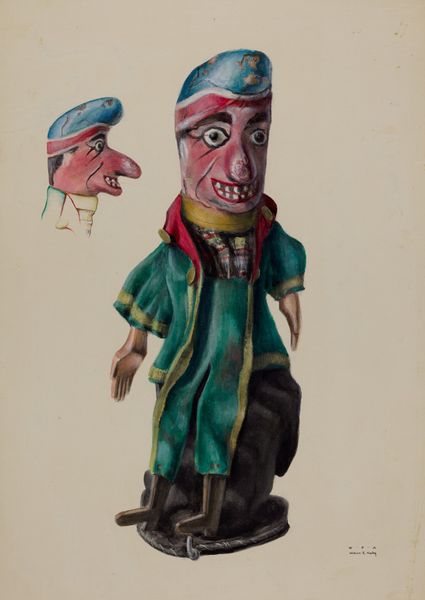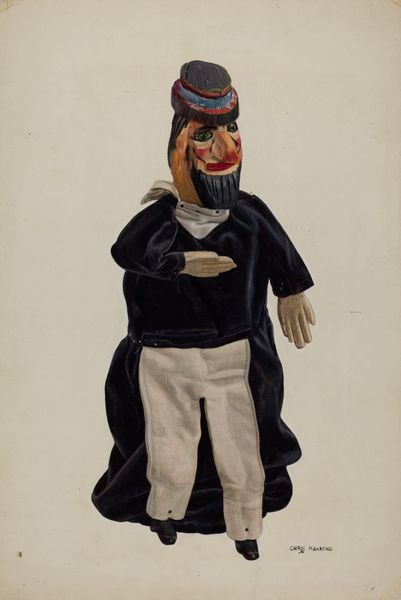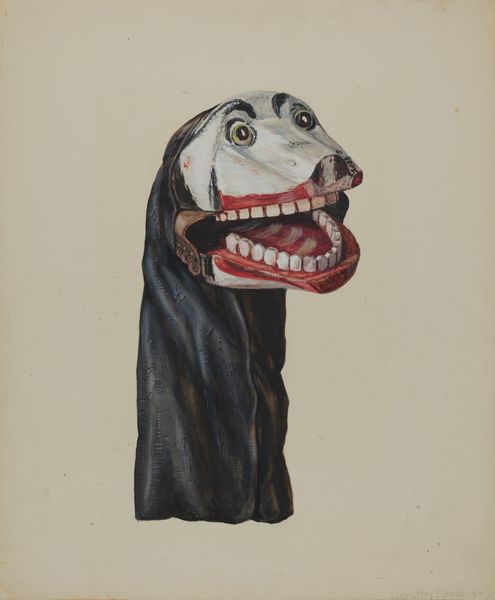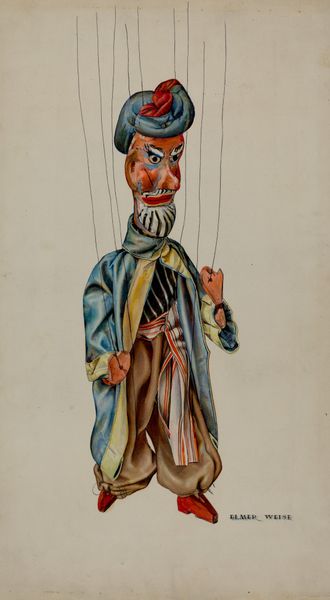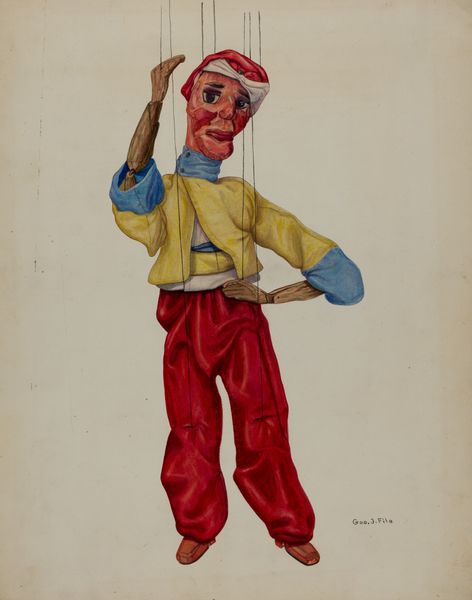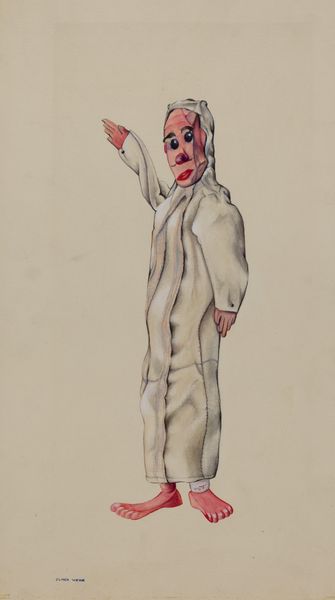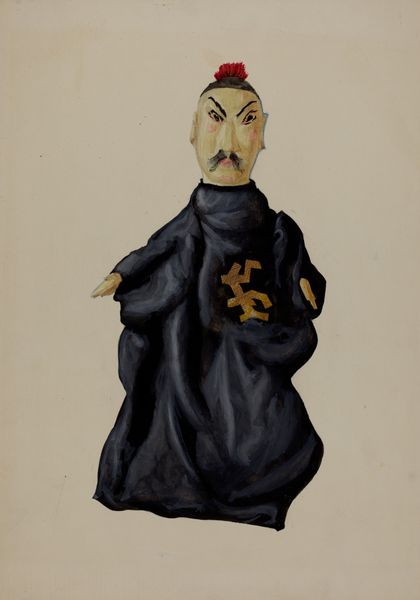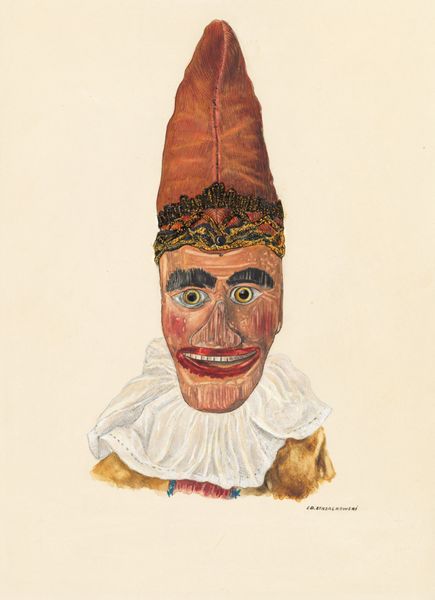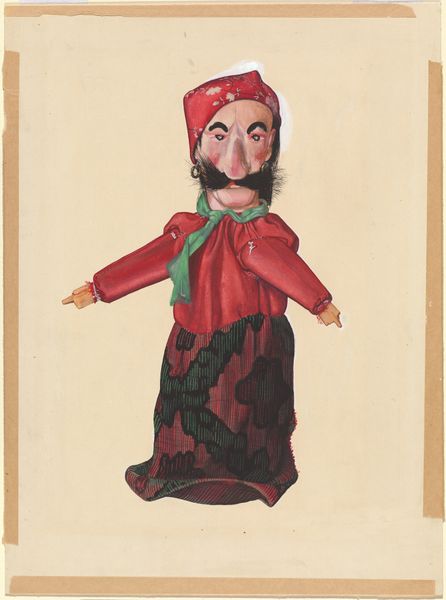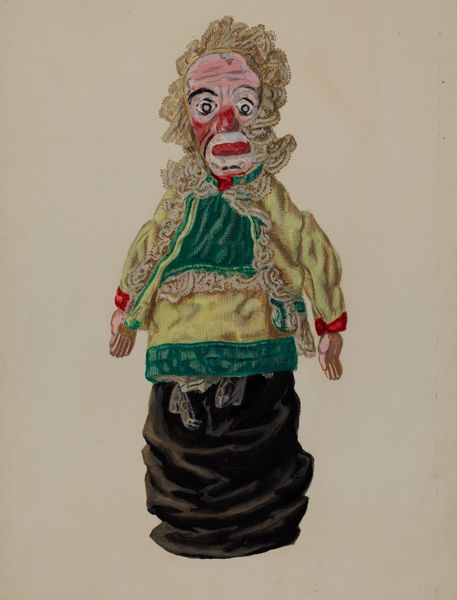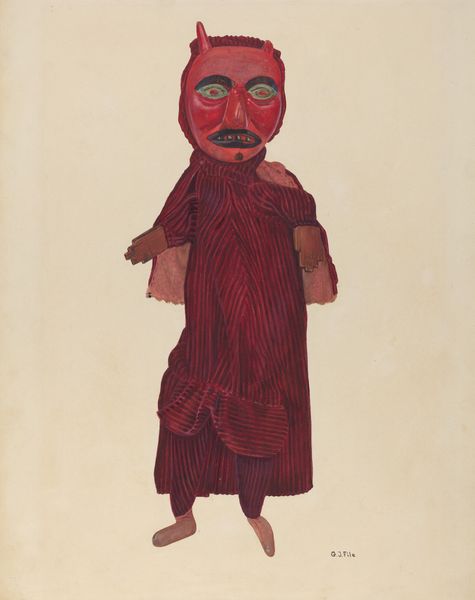
drawing
#
drawing
#
caricature
#
oil painting
#
portrait reference
#
animal drawing portrait
#
portrait drawing
#
watercolour illustration
#
portrait art
#
watercolor
#
fine art portrait
#
digital portrait
Dimensions: overall: 50.8 x 32.1 cm (20 x 12 5/8 in.) Original IAD Object: 17" high
Copyright: National Gallery of Art: CC0 1.0
Curator: Oh, that’s certainly…something. I immediately notice the textures – almost velvety. What medium do you think? Editor: That would be Florian Rokita’s “Old Nick, the Devil,” created around 1936. I understand it's rendered as a drawing, though those dense blocks of color read more like an oil painting. The artist really commits to layering those washes to achieve a saturated finish, you can feel that plushness visually. Curator: The subject matter is interesting in tandem with what appears to be plush surfaces and textiles—Rokita isn't just giving us a devil; they're giving us a very specifically adorned devil. Think of the centuries of the Devil's representation shifting between seductive charmer to hideous monster—this recalls more humanized and palatable depictions of evil from popular stories. It reminds us of a figure both frightening and alluring in equal measure. Editor: Indeed. This resonates on a material level as well. The artist uses humble means, namely paper and drawing techniques to elevate a low subject with painterly concerns. What strikes me are these juxtapositions between class connotations and medium accessibility in terms of material and representation, to form these questions. Curator: Right—a figure historically representing temptation, rendered with tempting textures. I see the white horns, reminiscent of the Christian depiction, a nod toward that tradition and the animalistic but, as you mention, approachable look. There's a powerful continuity there with other works depicting “Old Nick.” This image retains recognizable traits of previous versions, ensuring viewers understand precisely what they're looking at. Editor: To build on your idea of recognizability, one wonders what kinds of papers and pigments Rokita had access to. How did these practical circumstances shape a more demure ‘Devil’ figure when considering available materiality, or limited artistic expertise? The result softens what otherwise reads as a striking image with sharp angularity that may have even been cost-prohibitive during that era. Curator: It definitely gives one a lot to consider about the iconography surrounding it! Editor: Absolutely, quite stimulating indeed when we remember its period, and the social factors tied up with even the artistic materiality itself.
Comments
No comments
Be the first to comment and join the conversation on the ultimate creative platform.
